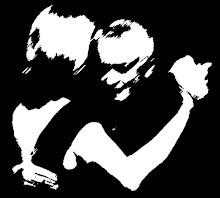Monday 10 October 2016
Things my mother taught me
When guests come to your home for the first time, you show them in, you introduce them to other people who are present. You help them to feel at ease.
So, in your experience, do milonga organisers make you feel welcome and show you where there are free seats? Or are you expected to fend for yourself after paying your entry fee? As a newcomer, are you introduced to a few dancers, to help ease you into the local scene?
When going out, I was expected to make an effort with my attire and grooming. It showed respect and appreciation to my hosts and fellow guests.
Isn't it lovely when men and women at the milonga have donned some nice clothes for the event, which also helps them leave their day-to-day lives at home, at least for a little while.
When wanting to engage in conversation with someone, I learned to read the other person's body language first, to see whether they might be interested in talking with me.
It's wonderful to see more and more people in milongas confidently using the cabeceo, the "Are you interested in dancing with me?" non-verbal form of invitation.
My mother also taught me to say "No", when I felt uncomfortable.
So, I don't understand why otherwise assertive women put up with some dance partners' behaviour. Are they afraid of hurting his feelings? What about their own feelings and self-respect?
If we bump into someone while walking down the footpath, we automatically apologise, and pay more attention as we walk on.
How many times have you been bumped or kicked while dancing at a milonga, with no acknowledgement from the perpetrator, let alone an apology? Nowadays this is infrequent in Adelaide, but it does shock me when it happens.
Should the milonga be any different to other social situations, when it comes to common courtesy? I think not. Yet, why do some people forget what their mother taught them, when they go to a milonga?
Maybe it's a question of maturing and feeling comfortable in one's tango skin, and realising that tango is not about executing steps. It's about relating to others.
PP
Subscribe to:
Posts (Atom)
Popular posts
-
Having been immersed in the tradition of Buenos Aires milongas, I still feel compelled to use the ‘cabeceo’. Cruising around the milongas wi...
-
If you like an invitation to dance in the form of an outstretched hand, a tap on the shoulder or a more formal Would you care to dance? , th...
-
I love the creative process of DJing, and watching dancers respond to the emotional journey created by the music. But DJs take care! Musi...
-
Sometimes our eye-sight doesn’t serve us well, and our use of the cabeceo suffers accordingly. There have been times when a lady has acce...
-
Some interesting comments appeared on the previous post: Just follow the leader . Andy highlighted the challenge of the woman's role ...
-
Ladies, we may sometimes lament the gender imbalance at milongas. Perhaps we dance less than we’d like. But have you considered some of th...
-
Ever found yourself dancing with someone and regretting it? Were you unsure of what went wrong? Do you still have no idea of how to preve...

